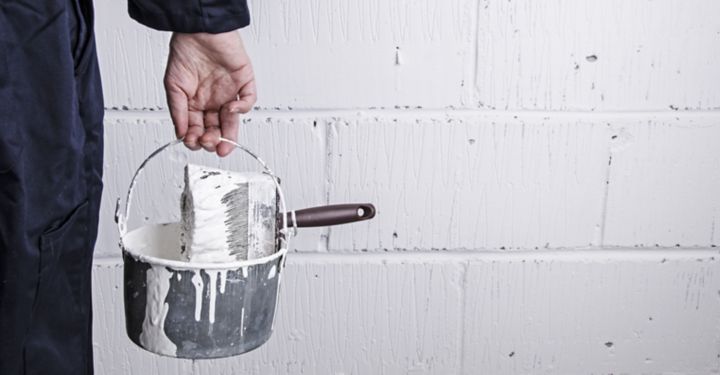Do you want to know what type of paint is best for exterior? It is entirely possible to apply colored paint to the exterior walls of a house. Of course, decorative inspirations sometimes have to bend to the possible regionalism that applies to local architecture.
But generally speaking, imagination and personal tastes can express themselves more or less freely. The right time to repaint your woodwork or plaster is when the coating cracks, has tarnished, or simply when you feel like it! Moreover, it is sometimes an obligation, especially when renovating the facade of a condominium.
Naturally, the choice of paint for exterior walls must be made according to its resistance to bad weather and temperature changes. It must also be able to withstand the passage of time and the effect of pollution.
What Are The Different Types Of Exterior Paint?
Exterior wall paint can be water-based or oil-based. A distinction is generally made between acrylic and pliolites such as glycerol. Acrylic paint is a water-based paint, so it can be easily cleaned with water. Glycerophtalic paint, on the other hand, is an oil-based paint, which is more fragrant but also more polluting.
It requires solvent to clean the utensils used for its application. Each of them can be a matte paint or a satin paint. The former is suitable for porous and irregular surfaces. The second is perfectly adapted to smooth surfaces. You can also opt for glossy or lacquered paint for metal surfaces.
Some distributors offer single-coat paint, which can be handy for beginners in DIY. As the name suggests, this avoids the need for a second coat. Finally, it should be noted that the market offers a wide variety of products for specific uses.
Effect paint, for example, offers different visual rendering depending on how you wish to give your exterior elements a different look. Another example is anti-rust coatings that extend the life of exterior grilles and other gates.
How to Choose Your Exterior Wall Paint?
Whether it is paint for shutters, paint for exterior wood, exterior plaster or to cover the metal of an electric gate, there are a multitude of different coatings for specific uses. Acrylic paint has the advantage that it can be applied to almost any surface except metal.
This water-based paint is easily washable, a major advantage for surfaces exposed to rainfall and pollution. Microporous, it also allows humidity to evacuate by itself. Finally, by opting for this type of coating, unsightly cracking is avoided in the long term.
Glycerophtalic paint does not flake and is resistant to waterfalls and the effects of the sun’s rays. It also protects surfaces very well against the proliferation of foam and limits the absorption of moisture by the surfaces. Nevertheless, it is less environmentally friendly than acrylic paint.
Here are the materials you need to apply your coats and obtain a result that is both clean and pleasing to the eye:
- Roller
- Telescopic handle
- Stepladder
- Scraper
- Plugging plaster
- Pressure washer
- Sanding paper
- White Spirit
- Scraper
- Spin-out grid
What Are The Steps For Applying Paint To An Exterior Wall?
Step 1: Choose Your Moment
Prefer to paint in autumn or spring to take advantage of the average temperatures. Avoid heat waves and winter climates to optimize your drying time. Choose shade, do not paint in full sun, which will prevent cracks from appearing. Avoid times of the day when the atmosphere is particularly humid, such as in the morning with its dew.
Step 2: Prepare Your Surface
Clean your wall using a high pressure washer. Remove rust, mold, mildew, moss or fungus with a scraper or brush. Fill any holes and irregularities with sealer. Allow to dry for at least a week.
Step 3: Apply The Undercoat
Mix your undercoat inside the bucket. Use a wooden stick or an electric mixer. Avoid taking the mixer out of the bucket while it is running, as this may cause paint to splash everywhere. Soak your roller and wring it out on the grill. Proceed by squares of 1m side starting from the top of the wall, until you cover the whole surface. Allow to dry. Do the same with the first coat.
Final Step: Finishing
Apply as many coats as necessary, observing the recommended drying times to avoid cracking and other unsightly effects. Ideally, finish an entire surface before interrupting your work.

